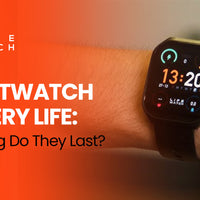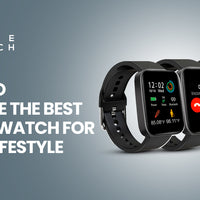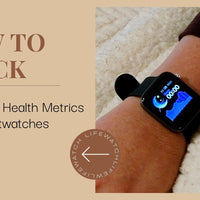The story of Lifewatch and its ascent to market leadership is a tale of innovation, strategic vision, and perseverance. At the heart of this success is Yasir Abdul, whose journey from As Seen on TV products to revolutionizing the tech industry offers a fascinating look into how transformative ideas can reshape entire markets. This article explores the remarkable evolution of Lifewatch and Inventel, uncovering the key milestones and strategic decisions that have defined their journey.
Yasir Abdul's Vision and Early Beginnings
Yasir Abdul's career is a testament to the power of visionary thinking and entrepreneurial spirit. His early ventures into the As Seen on TV market provided a foundation for what would become a groundbreaking shift in the tech world.

Early Influences and Entrepreneurial Spirit:
- Passion for Innovation: From a young age, Abdul demonstrated a passion for technology and innovation. His early projects and business ventures showcased his ability to identify market gaps and develop creative solutions.
- Founding Inventel: Abdul's founding of Inventel was driven by a desire to bring innovative products to a broader audience. The company initially focused on As Seen on TV products, leveraging direct response television to reach consumers.
The Birth of Lifewatch: From Concept to Reality
The creation of Lifewatch marked a pivotal moment for Inventel. Abdul's vision transformed a simple concept into a revolutionary product that would redefine the wearable tech industry.

1. Conceptualizing Lifewatch
The journey from concept to reality for Lifewatch involved meticulous planning and a deep understanding of consumer needs. A focus on innovation and user experience marked Abdul's approach to conceptualization.
Steps in Conceptualization:
- Identifying Market Needs: Abdul and his team conducted extensive market research to identify emerging trends and consumer needs. They recognized a growing demand for health-focused wearable technology that was both functional and stylish.
- Designing the Product: Lifewatch was designed with a clear focus on user experience. The team developed features such as heart rate monitoring, sleep tracking, and emergency alerts based on consumer feedback and technological advancements.
- Prototyping and Testing: Multiple prototypes were developed and tested to refine the product. Abdul's commitment to thorough testing ensured that Lifewatch met high standards of performance and reliability.
2. Innovative Development and Features
The development of Lifewatch involved integrating cutting-edge technology and prioritizing user-centric design. Abdul's innovative approach ensured that Lifewatch stood out in a competitive market.
Innovative Features:
- Advanced Health Monitoring: Lifewatch incorporated state-of-the-art sensors and technology to provide accurate health monitoring. Features such as real-time heart rate tracking and sleep analysis were designed to offer valuable insights into users' health.
- Seamless Connectivity: The device was designed to integrate seamlessly with other devices and apps, enhancing its functionality and convenience. Abdul's focus on connectivity ensured that Lifewatch offered a comprehensive health management solution.
- User-Friendly Interface: The interface was designed to be intuitive and easy to use, making it accessible to a wide range of users. Abdul's emphasis on user experience was evident in the device's design and functionality.
Strategic Marketing: Building the Lifewatch Brand
The success of Lifewatch was not just about technological innovation; it was also about effective marketing. Abdul's strategic approach to branding and promotion played a crucial role in establishing Lifewatch as a market leader.
1. Crafting the Brand Narrative
Abdul's marketing strategy focused on creating a compelling brand narrative that resonated with consumers. The story of Lifewatch was crafted to highlight its benefits and differentiate it from competitors.
Brand Narrative:
- Emphasizing Benefits: The marketing materials emphasized how Lifewatch could improve users' lives by providing real-time health insights and peace of mind. Abdul's team highlighted the practical benefits of the device in everyday situations.
- Creating Emotional Connections: The brand narrative was designed to create an emotional connection with potential customers. Personal stories and testimonials were used to illustrate the positive impact of Lifewatch on users' health and well-being.
2. Executing Marketing Campaigns
Abdul's marketing campaigns were executed with precision, utilizing a range of channels to reach and engage consumers. The campaigns aimed to build brand awareness and drive sales.
Campaign Execution:
- Multi-Channel Approach: Lifewatch's marketing strategy included TV commercials, digital advertising, social media promotions, and influencer partnerships. This multi-channel approach ensured that the product reached a wide audience and generated buzz.
- Product Demonstrations and Events: Live demonstrations and interactive events were organized to showcase Lifewatch's features. These events allowed potential customers to experience the product firsthand and provided opportunities for engagement.
- Influencer Collaborations: Partnering with tech influencers and industry experts helped build credibility and extend the reach of Lifewatch's marketing efforts. Influencers reviewed and endorsed the product, contributing to its visibility and appeal.
Overcoming Challenges: The Road to Success
The journey of Lifewatch was not without challenges. Abdul's leadership was crucial in overcoming obstacles and ensuring the product's success.

1. Addressing Development and Production Challenges
The development and production of Lifewatch faced several hurdles, from technical issues to supply chain disruptions. Abdul's problem-solving skills were key to navigating these challenges.
Challenges Faced:
- Technical Issues: Technical difficulties related to sensor accuracy and data integration were addressed through rigorous testing and collaboration with engineers. Abdul's team worked tirelessly to resolve these issues and ensure the product's performance.
- Production Delays: Supply chain disruptions and manufacturing delays were managed through strategic planning and coordination. Abdul implemented solutions to streamline production and maintain quality control.
- Market Competition: Competing with established brands and new entrants in the wearable tech market requires continuous innovation and adaptation. Abdul's focus on differentiation and innovation helped Lifewatch stand out.
2. Lessons Learned
The experience of launching Lifewatch provided valuable insights that informed future strategies for Inventel and its product development approach.
Key Lessons:
- Importance of Innovation: Lifewatch's success highlighted the need for ongoing innovation and adaptation to market trends. Staying ahead of technological advancements is crucial for maintaining a competitive edge.
- Value of Customer Feedback: Incorporating customer feedback into product development is essential for creating products that meet consumer needs. Lifewatch's success underscored the importance of understanding and addressing user expectations.
- Effective Marketing Strategies: The impact of a well-executed marketing strategy on product success was evident. Crafting a compelling brand narrative and utilizing diverse marketing channels can significantly enhance product visibility and appeal.
The Legacy of Yasir Abdul and Lifewatch
Yasir Abdul's contributions to Inventel and the success of Lifewatch have left a lasting impact on the tech industry. His leadership has influenced industry standards and inspired future innovations.
1. Influence on Industry Standards
Abdul's work with Lifewatch has set new benchmarks for innovation and consumer engagement in the tech industry. His approach to product development and marketing has raised the bar for quality and differentiation.
2. Inspiration for Future Innovations
The success of Lifewatch serves as a source of inspiration for future technological advancements. Abdul's vision and strategies offer valuable lessons for entrepreneurs and industry leaders seeking to make a significant impact.
Wrap-Up
Yasir Abdul's remarkable journey with Inventel and the success of Lifewatch exemplify the power of visionary thinking and strategic execution. From the early days of As Seen on TV products to leading the market with innovative wearable technology, Abdul's leadership has redefined industry standards and set new benchmarks for success. The story of Lifewatch is a testament to the transformative impact of innovation and serves as an inspiration for future advancements in the tech world. As Inventel continues to evolve, Yasir Abdul's legacy will remain a cornerstone of its success and a guiding force for future innovations.
Read More Articles:
- 10 Best Smartwatches, Editor Tested and Reviewed 2024
- Medical Smartwatch: Wearable Tech in Healthcare
- Exploring the Benefits of LifeWatch
- 6 Types of Useful Smartwatch Interactions
- Difference Between Regular Life Watch and Deluxe Life Watch
- Smart watches: A review of evolution in the bio-medical sector















